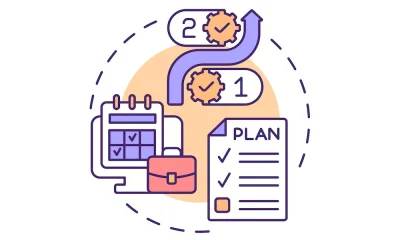Accounting & Finance
Why Upgrading Your Fleet Vehicles Is A Smart Investment

In the fast-paced business world, any opportunity to optimize operations, improve efficiency, and bolster profitability is a welcome prospect. One area that often gets overlooked is the potential of upgrading fleet vehicles.
A fleet upgrade may seem like a significant expense, but when viewed as an investment, it promises short-term and long-term returns. In this article, we look at why and how to upgrade your fleet of vehicles.
Timing Of Fleet Upgrade
When is it time to upgrade your current fleet inventory?
The decision to upgrade your current fleet inventory is not taken lightly. So, when is the right time to do it? One clear indication is when the maintenance cost of your fleet starts to escalate.
Maintenance costs escalate
Frequent repairs, parts replacement, and associated downtime can negatively impact your bottom line. When these costs start to creep up and overtake the costs of a new vehicle purchase or lease, it’s time to consider an upgrade.
An increase in the number of on-road breakdowns is another sign. These unexpected events disrupt your operations and affect your brand’s reliability. Upgrading newer vehicles with better reliability can mitigate these risks, ensuring smooth and consistent operations.
Fuel efficiency
Consider your fleet’s fuel efficiency. Older models typically have lower fuel efficiency, leading to higher fuel expenses. On the other hand, new models are designed with improved fuel economy, which could result in significant cost savings in the long run.
Operations Costs
In addition to operational costs, consider how well your current fleet meets your business needs. If your business has grown or evolved, and your current fleet can no longer efficiently serve these new demands, it might be time for an upgrade.
Features
Upgraded vehicles can offer more space, better functionality, and improved technology to match your evolving business requirements.
Pay attention to advancements in vehicle technology. Today’s vehicles offer advanced safety features, connectivity, and data management capabilities. If your fleet is falling behind in these areas, upgrading could help your business remain competitive and efficient.
Enhancing Fleet Performance
How can you enhance fleet performance through optimized vehicle organization?
Investing in fleet upgrades isn’t just about buying new vehicles. It also involves optimizing vehicle organization to enhance fleet performance.
Organized vehicles contribute to efficient operations by reducing the time spent locating and accessing equipment or products. Moreover, an organized vehicle helps to reduce the risk of accidents caused by improperly secured equipment.
Optimized vehicle organization begins with assessing the needs of your drivers and the nature of their tasks. Understanding these needs allows you to customize the interior and exterior of your vehicles for maximum efficiency. This might mean installing shelving systems in delivery vans or adding lift gates to trucks.
Adopting vehicle organization systems also contributes to the lifespan of your vehicles. These systems can reduce wear and tear by preventing equipment from moving around and causing damage, leading to lower maintenance costs.
Newer models of fleet vehicles often offer advanced options for vehicle organization. These can include modular systems that allow for customization based on your specific needs, further improving the productivity and efficiency of your operations.
The best way to transport your vehicles for up-fitting is by using a trusted auto transport broker. Regarding car and motorcycle shipping for businesses, a shipping broker will crawl through their network of transport carriers and ensure you get the best service for your budget. Remember that by using one upfitter for your entire fleet, the vehicles will be better matched together.
An optimized vehicle organization not only boosts fleet performance but also the morale of your drivers. A well-organized workspace can improve job satisfaction, increase productivity, and lower turnover.
Ways to Upgrade Company Vehicles
There are various ways to upgrade your company vehicles beyond purchasing new models. Let’s delve into these options, starting with improved safety features.
Improved Safety Features: Protecting Your Drivers and Assets
One significant area to focus on when upgrading your fleet is safety features. Newer vehicle models come with advanced safety technologies like collision avoidance systems, blind spot detection, lane departure warning, and automatic emergency braking. These features can protect your drivers, reducing the risk of accidents and potential liability costs.
Equipping your fleet with dash cameras can provide crucial insights into driving behavior, offering valuable data to improve driver training and identify potential safety risks before they lead to accidents. Upgrading to vehicles with these safety enhancements can ultimately help protect your company’s most valuable assets – its employees.
Advanced Technology Integration: Enhancing Connectivity and Data Management
Technology plays an increasingly critical role in fleet management. Advanced technology integration, including telematics, GPS tracking, and real-time data analytics, can provide unprecedented insights into your fleet’s operations. This, in turn, enhances connectivity and data management, leading to improved decision-making.
GPS tracking
GPS tracking technology allows for real-time monitoring of vehicle locations, enhancing route optimization and fuel efficiency. Moreover, it also improves the safety and security of the fleet, as the vehicles can be tracked in case of theft or misuse.
Telematics
Telematics systems can offer valuable data on driving behaviors, fuel usage, vehicle idle time, etc. This data can help identify inefficiency and implement necessary changes, promoting a culture of continuous improvement in fleet operations.
Integrating these technologies into a centralized fleet management system provides a holistic view of the fleet’s operations. This complete visibility enables better planning, scheduling, and resource allocation, significantly enhancing operational efficiency and profitability.
Enhancing Brand Image: Impressions, Perception, and Recognition
An often-overlooked aspect of upgrading fleet vehicles is the impact on your company’s brand image. An aging, poorly maintained fleet can send the wrong message about your company’s professionalism and attention to detail. On the other hand, a modern, well-maintained fleet can improve your brand’s image, reflecting positively on your company’s values and standards.
Visual
In addition, fleet vehicles act as moving billboards for your business. Upgrading your fleet allows you to redesign vehicle graphics for maximum impact, enhancing brand recognition and reach. A consistent, professional look across all your vehicles reinforces brand identity and can make a lasting impression.
Racks & Ramps for Commercial Vans
Commercial vans are often the workhorses of a fleet, so optimizing them can dramatically improve efficiency. Incorporating racks and ramps into your fleet upgrade plans can offer numerous benefits. For one, they increase the vehicle’s capacity, enabling it to carry more cargo, equipment, or materials. This translates into fewer trips and increased productivity.
Racks and ramps enhance safety and convenience for drivers. Loading and unloading have become easier and safer, reducing the risk of workplace injuries. Racks and ramps also protect the vehicle’s interior from damage caused by loose equipment or materials, thus prolonging the vehicle’s lifespan.
Racks and ramps provide an organization system that optimizes space and reduces clutter. This means drivers can quickly find and access what they need, reducing downtime and frustration.
Service Bodies, Dump Bodies, and Other Commercial Truck Specialty Upgrades
Consider specialty upgrades like service bodies and dump bodies if your fleet includes commercial trucks. Service bodies are designed with compartments and bins that provide ample storage for tools and equipment, making them ideal for service industries like HVAC, plumbing, or electrical work.
On the other hand, dump bodies are essential for construction, landscaping, or waste management industries. They allow for the transportation and dumping of heavy materials with ease. Upgrading to trucks with these specialized bodies can dramatically improve the efficiency and productivity of your operations.
Other specialty upgrades might include refrigeration units for food delivery trucks or hydraulic lifts for utility trucks. These upgrades contribute to a more functional and efficient fleet tailored to your business needs.
Crew Van Conversions: Turning a Great Deal Into a Great Asset
Crew van conversions offer another way to maximize your fleet investment. These conversions transform standard vans into vehicles that accommodate crew and cargo. This means you can transport your team and their equipment in one trip, improving efficiency and reducing costs.
Crew van conversions can be customized to fit your specific needs. You can incorporate storage compartments, workstations, seating configurations, and more. By converting a standard van into a multifunctional vehicle, you are essentially turning a great deal into a great asset for your business.
Predictive Analytics: Anticipating Maintenance Needs and Avoiding Breakdowns
In the age of digital transformation, predictive analytics is becoming an invaluable tool in fleet management. Predictive analytics involves using data, statistical algorithms, and machine learning techniques to identify future outcomes based on historical data.
When applied to fleet management, it can anticipate maintenance needs and avoid breakdowns.
Predictive maintenance
Predictive maintenance involves collecting data from various sensors installed in fleet vehicles. This data can be used to predict potential mechanical issues before they become significant problems, allowing for preventive maintenance. This not only extends the lifespan of your vehicles but also reduces downtime due to unexpected breakdowns.
Predictive analytics can provide insights into driver behavior. For example, it can identify patterns of harsh braking, rapid acceleration, or excessive speed, leading to increased wear and tear on vehicles. Addressing these issues can enhance vehicle longevity and safety while reducing maintenance costs.
Predictive analytics also enables better resource allocation. Knowing when a vehicle will likely require maintenance, you can plan your fleet’s schedule accordingly to avoid disruptions. This ensures a higher level of service to your customers and enhances your brand’s reliability.
Integrating predictive analytics into your fleet management strategy can lead to significant cost savings. Predictive analytics delivers a strong return on investment by reducing unnecessary maintenance, improving fuel efficiency, and extending vehicle lifespan.
Predictive analytics can be a powerful tool for strategic decision-making. The insights gained can inform decisions about vehicle replacement, driver training programs, and other operational aspects. In essence, predictive analytics provides a data-driven approach to managing your fleet, setting you up for long-term success.
Investing in Fleet Upgrades for Long-Term Success
Investing in fleet upgrades is more than a one-time expense; it is a strategic move toward long-term success. Upgraded vehicles with advanced features can provide immediate benefits in terms of operational efficiency, cost savings, and improved safety. However, the advantages don’t stop there.
Over time, fleet upgrades can lead to reduced maintenance costs. Newer vehicles generally require less frequent and less expensive maintenance than older ones. This and the potential savings from improved fuel efficiency can result in substantial cost reductions in the long run.
A well-maintained, upgraded fleet can improve customer satisfaction. Ensuring timely and reliable service can enhance your brand’s reputation and foster customer loyalty. This directly impacts your bottom line, as retaining customers is often more cost-effective than acquiring new ones.
Fleet upgrades can also contribute to employee satisfaction. Working with newer, safer, and more efficient vehicles can boost employee morale and productivity. It also conveys that the company values its employees and is willing to invest in their safety and comfort.
Investing in fleet upgrades also provides an opportunity to incorporate the latest technologies. These technologies can streamline your operations, provide valuable data, and give you a competitive edge in the market.
Remembering fleet upgrades can be tailored to your specific business needs is essential. Whether it’s improving the functionality of your commercial vans or integrating predictive analytics, each promotion is a step towards creating a fleet that effectively supports your business objectives.
The decision to upgrade your fleet vehicles is not merely about replacing old vehicles with new ones. It is a strategic investment that can deliver both immediate and long-term returns. From improving operational efficiency and safety to enhancing brand image and leveraging advanced technologies, fleet upgrades offer multiple avenues for value creation.
While the upfront cost may seem significant, the long-term savings and benefits can more than justify the investment. As with any investment, it’s important to approach fleet upgrades with a clear strategy and a focus on the specific needs of your business. Doing so can transform your fleet into a powerful asset that drives your business toward sustained success.









